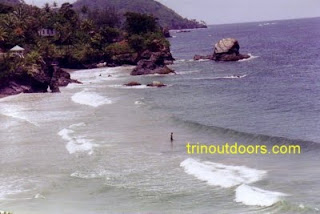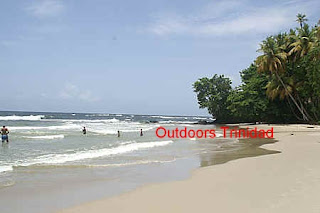Trinidad and Tobago - this Southern American wonder has gained immense popularity for its distinct and beautiful culture. More than that is the magnificence of its natural wonders, thanks to the well-protected beaches and aquamarine life found in the islands. A visit to Trinidad and Tobago will be surely be marked off as one of a kind.
1.) Experience Carnival
The Carnival is a once in a year festival celebrated by the people of Trinidad and Tobago and is observed two days before the Lenten week. Termed as "jump-up," the Carnival is a very ornate and colorful festival usually prepared weeks and sometimes even months before the actual celebration. Make sure that you mark your visit to Trinidad and Tobago with the Carnival experience.
2.) The Wildlife Reserves and National Parks
In Trinidad and Tobago, there are a lot of endangered animal and plant species. Some of these you can only find in this country. These are protected so much so that one fourth of the country's land area is dedicated to the protection and preservation of these animals and plants, so make sure that you visit at least one of these national parks.
3.) Christian Churches, Buddhist Temples and Muslim Mosques
Trinidad and Tobago accounts for diverse religions, and their religious structures prove this. You can visit the Christian Churches, Buddhist temples and Muslim mosques as you like. This is truly unique a very unique experience.
4.) Port-of-Spain
Hard not to miss, Port-of-Spain is the capital city of Trinidad and Tobago and where you will find the most modern places you are looking for. This is also where the country's main port is located. Here, you can do your shopping and seafood-eating here as well as bar hopping.
5.) Tobago's secluded beaches
What's good about the beaches in Tobago is that you can choose to own the beach. Yes, because there are a lot of beaches around the area, you are guaranteed a special spot where you can rest and relax by yourself. This is not something you can get out of a Californian beach, which is often crowded.
6.) Tobago's aquamarine life
One of the best places for you to enjoy snorkeling and scuba diving is in one of Tobago's beaches. The beaches here are so well-preserved that snorkeling will give you the chance to witness firsthand the beauty of aquamarine life. This is a perfect activity for you and your family.
7.) Trinidad's bird watching
Ecotourism is redefined by Trinidad and Tobago with this relatively new nature offering. Because of the immense number of bird species in the country, you can actually see how these birds interact with one another and even show off their skills. This is something you definitely won't see just anywhere.
8.) Shores of Trinidad
The shores of Trinidad are yet another place where you can enjoy much what the country's natural wonders have to offer. In here, you can enjoy a host of almost unlimited activities. The fun activities you will have will include nature tripping as well as sea diving.
9.) Chagnaramas' Yachting Adventure
Chargnaramas is actually the number one place in Trinidad and Tobago if you're looking to purchase a yacht or any means of sea traveling. Aside from that, however, you can also get to experience adventure through the yachting adventure the place can offer. With yachting, you will enjoy the scenery that Trinidad and Tobago offers.
10.) Calypso
Calypso is actually a hybrid of reggae music that originated in Trinidad and Tobago and is well loved by the people in the area. Make sure that before leaving Trinidad and Tobago, you get to have a taste of this kind of music, which you might not get to hear elsewhere. You may even be surprised to know that Calypso music is one of the things that will make your trip in the country worthwhile.












